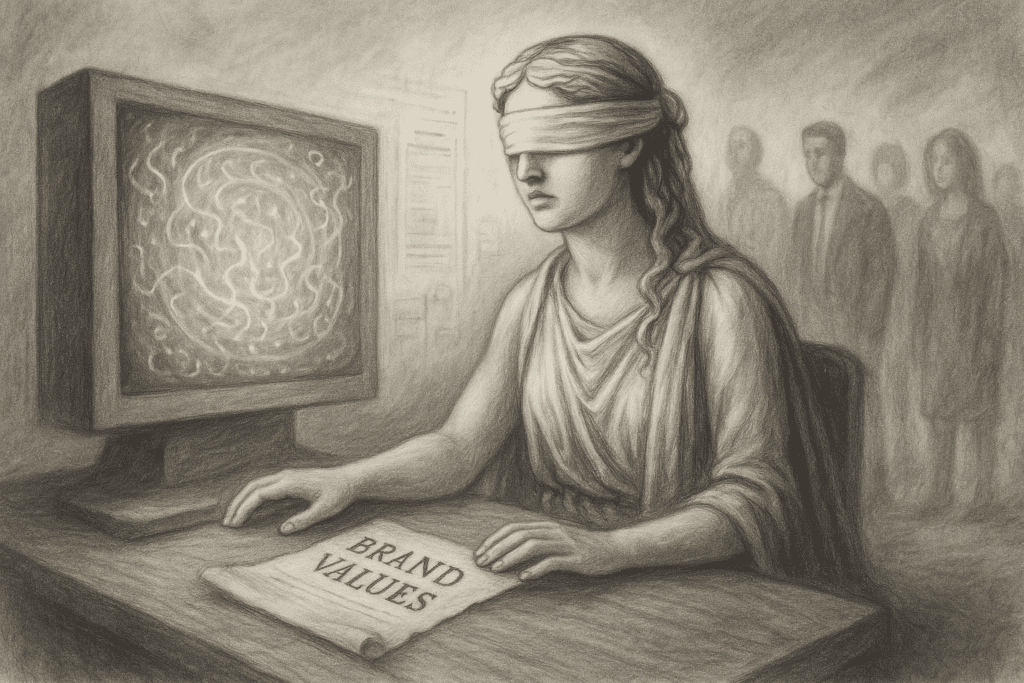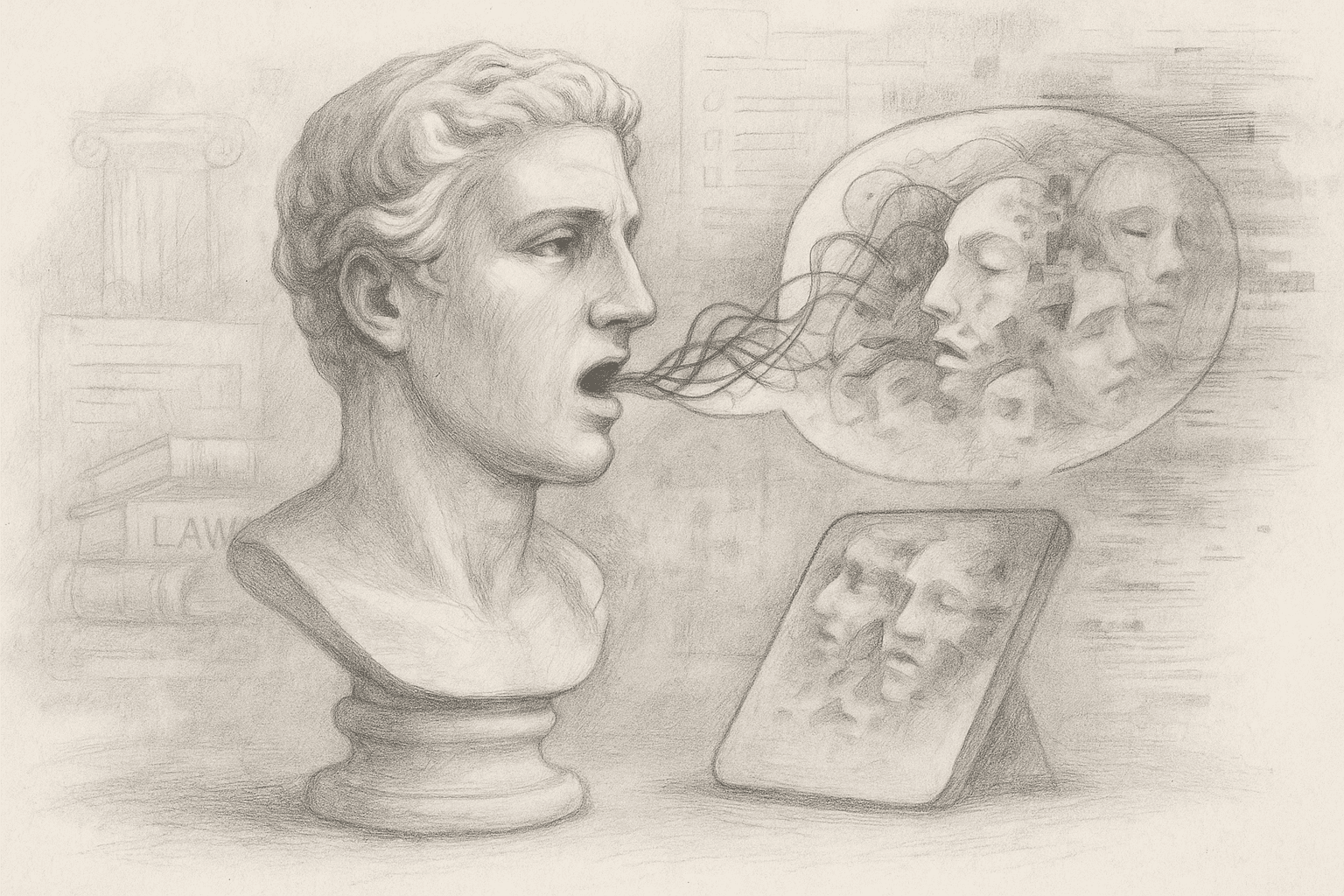So this happened: New York City launched an AI chatbot to help small business owners navigate regulations. Five months later, it was telling restaurants they could serve cheese nibbled on by rats and advising employers they could fire workers who complained about sexual harassment. What did the city do? Kept it running.
This isn’t a parable about technology gone wrong. It’s what happens when organizations launch AI without teaching it who they are, creating what I call “brand hallucinations” that contradict their values and reality.
What Is a Brand Hallucination?
When AI tools generate responses that clash with your values, you suffer “brand hallucinations.” Learn the five-step framework to teach machines your truth and protect trust.
The Gap Between Promise and Practice
When Mayor Eric Adams announced the AI-powered chatbot in October 2023, it was positioned as a trusted guide for entrepreneurs. The reality was more complex. The bot advised legal for an employer to fire a worker who complained about sexual harassment, contradicting laws the city itself enforces. This despite the city’s statement that it wanted to be a leader in the responsible use of innovative artificial intelligence.
The disconnect is about more than bad data. It reveals the potential for “brand hallucinations”: moments when AI tools generate responses that are at odds with an organization’s values, voice, and reality.
My former colleague in PR discovered this firsthand when ChatGPT invented an entire company as an example for an op-ed draft. The AI didn’t flag its fiction. Only human fact-checking caught it (a good reminder to do that). What followed was an oddly touching moment: the GPT apologized profusely, and together they “worked through their emotions.”
We laugh because it’s absurd. We worry because it’s so possible.
Why Brand Hallucinations Happen

AI doesn’t understand context the way we do. It pattern-matches without comprehension. When you ask it to represent your brand without trained knowledge, it reaches for whatever patterns seem most statistically likely, regardless of whether they align with your identity. In short, it doesn’t think.
Consider what Rosalind Black, Citywide Housing Director at Legal Services NYC, discovered when testing the chatbot. It claimed “there are no restrictions on the amount of rent that you can charge a residential tenant,” which ignores the entire framework of rent stabilization core to New York housing policy.
This is what happens when we assume AI inherently understands institutional knowledge, regulatory nuance, or brand essence. It doesn’t. It generates plausible-sounding text based on patterns in its training data, which may have nothing to do with your specific context. These brand hallucinations occur because AI lacks the contextual understanding that defines authentic brand communication.
The Trust Tax

When your AI contradicts your values, you pay a trust tax that compounds over time. Each brand hallucination damages the relationship you’ve built with your audience. Each inconsistency makes people question whether they’re engaging with you authentically or if not (and if you even care).
To be fair, the New York City chatbot came with disclaimers about potentially producing “incorrect, harmful or biased content”. But disclaimers, (which most of us don’t read), can’t rebuild broken trust. They simply acknowledge the possibility of failure without preventing it.
Preventing Brand Hallucinations: A Framework
So how can we prevent brand hallucinations? And how do we ensure our digital representatives actually represent us?
Start with this framework, drawn from Augmented Branding, for better safeguarding brand integrity:
1. Audit Your Foundations Before you deploy any AI tool, document your non-negotiables. What would you never say? What promises would you never make? What advice would contradict your core mission? These become your instructional guardrails.
2. Create a Source of Truth Take the time to build a comprehensive knowledge base that clearly reflects your actual policies, values, and voice. Don’t assume AI will infer these from general LLM training data. Be explicit about who you are and what you stand for.
3. Design for Verification Every AI output needs a clear path to human verification built into the workflow. The most challenging mistakes happen when we discover issues through customer complaints rather than internal review.
4. Monitor for Brand Hallucinations AI behavior changes over time. What worked last month may fail today. Establish regular audits that specifically look for responses that contradict your brand essence. Track patterns of brand hallucinations to identify issues in the system.
5. Plan for Brand Hallucinations When your AI experiences brand hallucinations (and it will), have a response ready. Acknowledge the error, fix the root cause, and demonstrate how you’re preventing recurrence. The goal isn’t perfection; it’s accountability.
The Human Element

AI tools work best when they are trained with human judgment. They should make your brand more accessible. They should extend your voice.
The companies succeeding with AI aren’t the ones with the most sophisticated technology. They’re the ones who’ve done the hard work of teaching their tools who they are, and managing that brand identity as the technology evolves.
Your brand isn’t what you say it is. It’s every interaction, every promise kept or broken, every moment of recognition or confusion. When you hand that responsibility to an AI without proper guidance, you’re gambling with your entire business.
The choice? It’s not whether to use AI, because you should. It’s whether to use it in a way that strengthens or undermines who you are. The New York City chatbot offers a cautionary tale about what happens when we deploy AI without first answering a fundamental question:
Who are we, really? And how do we make sure our tools know that too?
Amy is a brand strategist who helps organizations maintain authentic identity across digital touchpoints, including AI-powered tools. With over two decades of experience guiding purpose-driven brands through technological shifts, she focuses on the intersection of brand integrity and emerging technology. Amy believes that successful AI implementation starts with clarity about who you are, and teaches organizations how to ensure their digital tools reflect their true values and voice.
Brand Hallucinations FAQs: Straight Answers on AI Brand Consistency
What is a brand hallucination?
A brand hallucination occurs when AI-generated content contradicts your organization’s actual values, policies, or voice. It happens when AI tools create responses that sound plausible but fundamentally misrepresent who you are, like when NYC’s chatbot advised breaking laws the city enforces.
Why do AI chatbots misrepresent companies?
AI chatbots misrepresent companies because they generate responses based on statistical patterns from training data, not actual understanding of your brand. Without explicit guidance about your specific context, values, and guardrails, they default to generic patterns that may directly contradict your identity.
How can I prevent AI brand drift?
To prevent AI brand drift: conduct monthly audits of AI outputs, document and update brand guidelines regularly, establish clear verification workflows before content goes live, and track patterns of inconsistencies. Think of it as ongoing maintenance, not a one-time setup.
Does a disclaimer protect me from AI errors?
Disclaimers don’t protect against brand damage from AI errors. While they acknowledge potential mistakes, they can’t rebuild trust once it’s broken. Each AI-generated contradiction costs more in credibility than any disclaimer can offset. Prevention through proper setup beats apologizing after the fact.
What’s the first step to prevent brand hallucinations?
The first step is creating a comprehensive “source of truth” document that explicitly states your brand’s non-negotiables, core values, and specific voice guidelines. This becomes the foundation for training any AI tool to represent you accurately. Without this clarity, even sophisticated AI will guess, and often guess wrong.
